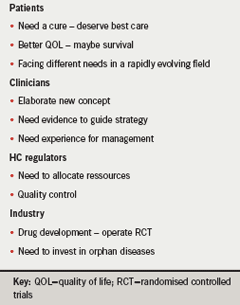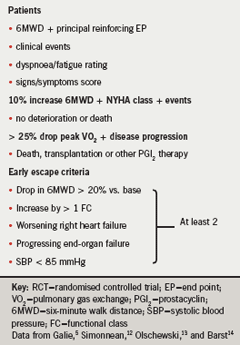General practitioners (GPs) have become used to asking their patients fairly detailed questions about the traditional risk factors, such as smoking habits, and measuring blood pressure, cholesterol and glucose to allow cardiovascular risk to be calculated. However, few would dream of including an oral examination within an assessment of global cardiovascular risk. Oral health has been viewed as the domain of dentists and has not troubled physicians when considering the prevention and management of cardiovascular disease.
However, this may be set to change. There is a growing tide of interest, swelled by a burgeoning literature, in the possible links between periodontal infection and a number of chronic diseases and conditions – including cardiovascular diseases and certain cancers.1-7
Review of the contemporary literature reveals evidence from large epidemiological datasets and meta-analyses of small-scale longitudinal studies and periodontal intervention studies, which shows that after adjustment for variables known to increase cardiovascular risk, there remains a significant increase in both incidence and prevalence of coronary heart disease (CHD) in subjects with periodontal disease.1,8 This has led to calls for robust and rigorous study of the association between periodontal disease and cardiovascular disease in order to establish, or refute, causation, and this is reflected in a consensus view on the implications for current clinical practice.8
Old ideas to new ideas
That severe periodontal infection could have systemic health implications is not a new concept.9 For centuries the mouth has been recognised as an important site for infection and an indicator of a person’s general health status. In terms of pathophysiological rationale, there is now contemporary evidence to suggest that people with severe periodontal infections have increased concentrations of circulating inflammatory markers such as C-reactive protein,10,11 adverse changes in blood pressure and serum cholesterol,11 and it has been suggested that periodontal pathogens could be linked with carotid intima-media thickening.12,13
Is the relationship causal?
What the current evidence does not allow, however, is certainty of a causal relationship between periodontal disease and cardiovascular disease.
Large-scale observational studies can provide some insights into the epidemiological importance of risk factors. The Atherosclerosis Risk in Communities (ARIC) study for example, has reported that the host response to oral bacterial infection has bearing on systemic atherothrombotic events, and that systemic exposure to more than one oral pathogen involved in periodontitis is related to an increased risk for CHD.11,14 However, substudies within observational datasets are fraught with methodological difficulties and influenced by confounding risk factors that are hard to control for, such as poverty, smoking, diet and level of education.
Is periodontal disease a potentially modifiable cardiovascular risk factor?
There is some suggestion that the treatment of periodontal disease might reduce cardiovascular risk, but little current evidence to support that this might reduce cardiovascular events.15,16
The way forward
The evidence is tantalising in suggesting that an oral infection might confer systemic cardiovascular risk – not least, as periodontal disease is very much a treatable and manageable condition. An estimated 8–10% of the population may have severe periodontal disease, yet the condition is amenable to dental treatment and potentially avoidable through good oral hygiene.
Specifically designed prospective studies are needed to clarify whether periodontal disease and cardiovascular disease simply share risk factors or whether there is a true causal relationship. These studies will need to control for confounding factors such as age, gender, smoking, family history and diabetes mellitus. Ultimately, the goal of such research will be to establish the population-attributable risk of periodontal disease with respect to cardiovascular disease, which would allow it to be used in calculating risk.
If the evidence is clear that periodontal disease is a cardiovascular risk factor, prospective intervention studies will need to assess whether intervention to prevent periodontitis in the general population reduces the risk of cardiovascular disease. Additionally, prospective studies will be needed to prove that treatment of established periodontal disease has demonstrable effects on accepted, cardiovascular disease end points such as death, fatal and non-fatal myocardial infarction and other coronary or cerebrovascular events. Research into whether treatment of periodontal disease has a beneficial effect on surrogate end points such as glycosylated haemoglobin (HbA1c) and lipid profile may be helpful in the time before the large end point studies report.
Although the research task may seem challenging, robust evidence could see oral health assume a place within the list of lifestyle-related and modifiable risk factors that contribute to cardiovascular disease.
Implications for current practice
So are there implications for current medical practice? It seems reasonable to suggest that good oral health may contribute to good general health, and in turn, that poor oral health could be viewed as a marker of an unhealthy lifestyle. Physicians should encourage any patients with poor oral health to consult with a dentist and there may be a case for dentists to consider referrals to GPs. Cardiovascular disease is born of multiple chronic risk factors that interact and compound to affect an individual’s risk for clinical events. When we assess a patient’s global cardiovascular risk, we routinely consider lifestyle factors together with an evaluation of well-recognised, potentially modifiable physiological and biochemical risk factors.
Our management involves attempting to control hypertension, dyslipidaemia and poor glycaemic control. Pharmacotherapies do much to reduce cardiovascular risk and the role of successful lifestyle interventions – helping patients to stop smoking, eat healthily, exercise more and avoid becoming overweight – is proven. To add oral health status to the list of patient lifestyle considerations would not add greatly to physician workload and could be seen as a natural extension of healthy lifestyle messages designed to help reduce the burden of cardiovascular disease.
Conflict of interest
MD received an honorarium by Colgate-Palmolive for work on the consensus document.
References
- Bahekar AA, Singh S, Saha S et al. The prevalence and incidence of coronary heart disease is significantly increased in periodontitis: a meta-analysis. Am Heart J 2007;154: 830–7.
- Michaud DS, Liu Y, Meyer M, Giovannucci E, Joshipura K. Periodontal disease, tooth loss, and cancer risk in male health professionals: a prospective cohort study. Lancet Oncol 2008;9: 550–8.
- Grau AJ, Becher H, Ziegler CM et al. Periodontal disease as a risk factor for ischemic stroke. Stroke 2004;35:496–501.
- Khader YS, Dauod AS, El-Qaderi SS et al. Periodontal status of diabetics compared with nondiabetics: a meta-analysis. J Diabetes Complications 2006;20:59–68.
- Saremi A, Nelson RG, Tulloch-Reid M et al. Periodontal disease and mortality in type 2 diabetes. Diabetes Care 2005;28:27–32.
- Shultis WA, Weil EJ, Looker HC et al. Effect of periodontitis on overt nephropathy and end-stage renal disease in type 2 diabetes. Diabetes Care 2007;30:306–11.
- Bobetsis YA, Barros SP, Offenbacher S. Exploring the relationship between periodontal disease and pregnancy complications. J Am Dent Assoc 2006;137(10S):7s–13s.
- Williams RC, Barnett AH, Claffey N et al. The potential impact of periodontal disease on general health: a consensus view. Curr Med Res Opinion 2008;24:1635–43.
- Hunter W. Oral sepsis as a cause of disease. BMJ 1900;1:215–16.
- D’Aiuto F, Parkar M, Nibali L et al. Periodontal infections cause changes in traditional and novel cardiovascular risk factors. Am Heart J 2006;151:977–84.
- Slade DG, Ghezi EM, Heiss G et al. Relationship between periodontal disease and C-reactive protein among adults in the atherosclerosis risk in communities study. Arch Intern Med2003;163:1172–9.
- Desvarieux M, Demmer RT, Rundek T et al. Relationship between periodontal disease, tooth loss, and carotid artery plaque: the oral infections and vascular disease epidemiology study (INVEST). Stroke 2003;34:2120–5.
- Engebretson SB, Lamster IB, Elkind MSV et al. Radiographic measures of chronic periodontitis and carotid artery plaque. Stroke 2005;36:561–6.
- Beck JD, Eke P, Heiss G et al. Periodontal disease and coronary heart disease. A reappraisal of the exposure. Circulation 2005;112:19–24.
- Ioannidou E, Malekzadeh T, Dongari-Bagtzoglou A. Effect of periodontal treatment on serum c-reactive protein levels: a systematic review and meta-analysis. J Periodontol 2006;77:1635–42.
- Offenbacher S, Beck JD. A perspective on the potential cardioprotective benefits of periodontal therapy. Am Heart J 2005;149: 950–4.


